Perusing paintings in a pandemic
During a regular school year, the Blanton Museum bustles with art lovers and Mac students. The Museum has been open since Aug. 15, but the pandemic has prompted many changes to the Blanton experience.
February 2, 2021
Shuttered for five months from March 13 until reopening on Aug. 15, the Blanton Museum of Art offers patrons the chance to visit during twice-daily attendance sessions, one in the morning and one in the afternoon. Art lovers can also attend the museum virtually by visiting the #MuseumFromHome resource page on the Blanton website. Photojournalist Lissa Castro recently paid a visit to the Blanton and we are pleased to offer you a vicarious trip to see the museum and the visitors she encountered on her day at the Blanton.
Paintings in a pandemic
This photo, taken on a Saturday morning, is of a pair of visitors looking at paintings in The Blanton Art Museum. Being a visitor at the Blanton is a good way to keep art in people’s lives while following COVID guidelines to stay safe. The Blanton Museum is currently open for a morning and an afternoon session with a break from 1 p.m. – 2 p.m. between the sessions for cleaning. “Your arrival time affects the duration of your visit,” reads a statement to the public on the Blanton Museum website. “If you buy a ticket with an arrival time at [noon] or [at] 4 p.m., you will only have one hour to visit the museum. If you would like a longer visit, make sure to reserve a ticket for an earlier time slot.”
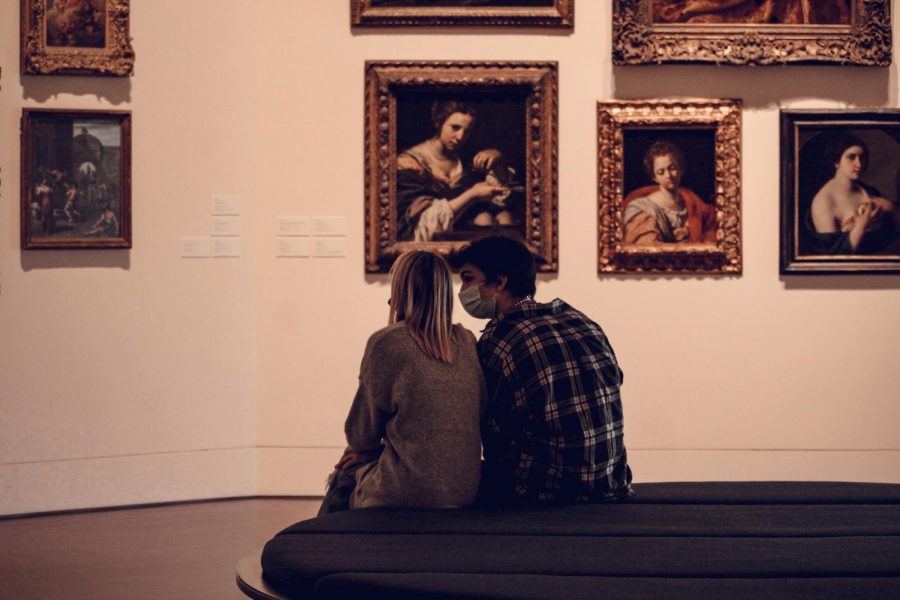
Murmured conversations
This picture is of a young couple quietly whispering to each other at the Blanton’s European art gallery early on a Saturday morning. Because of the reduced visitor in the museum, the typical quiet hum of conversation has dissipated. This turns every conversation or exchange of words instinctively into a whisper.
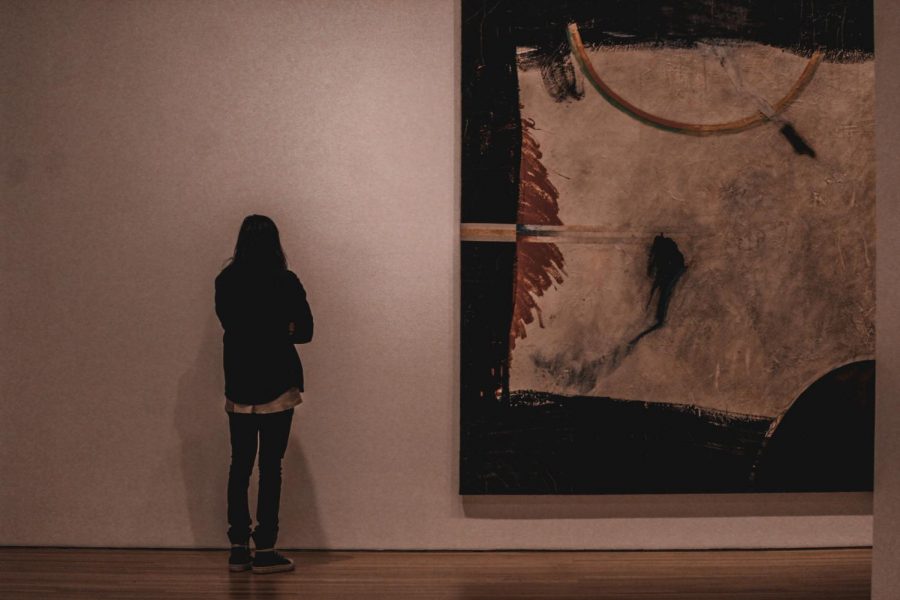
Lost abstract
This photo of a museum visitor includes them standing and admiring an abstract painting that others may not get the chance to see. The photo was taken on the second weekend of December, at the Exhibition “Expanding Abstraction: Pushing the Boundaries of Painting in the Americas, 1958–1983.” While the paintings were on exhibit, the Blanton website boasted that “many of the works are large scale and have rarely been shown before.” Unfortunately, there were much more rarely seen because of the small turnout due to COVID. The exhibition closed on Jan. 10.

Pandemic principle
This picture is of one of the many signs in The Blanton Art Museum instructing patrons how to properly wear the required face masks. This is one of COVID-necessitated rules and guidelines that the Blanton has adopted. The safety provisions also include social distancing guidelines for visitors who are not in the same household and an online-only ticket reservation policy. According to the policy posted on the Blanton website, all Blanton employees and all visitors 3 years old and older must wear a mask over their mouth and nose for the duration of their visit.
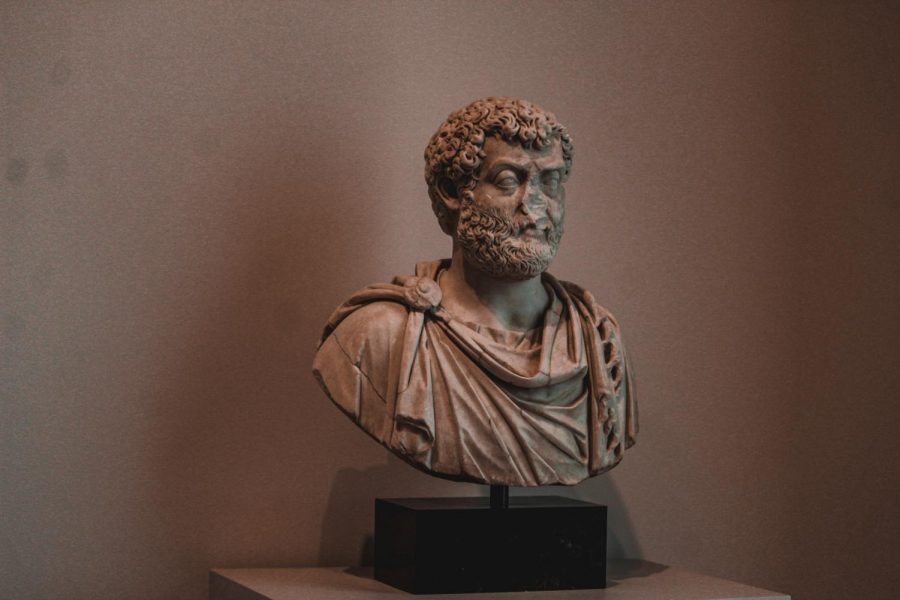
Old faces
As pictured in this European bust, not all of the faces in the museum are visitors. This sculpture of a “Bearded Man” in The Blanton’s European exhibit was taken during the second weekend of December, but the bust was created in the late 2nd century. The bust is 76.2 centimeters by 52.7 centimeters, and it’s unknown who created it. The description of the piece posted near the bust reads, “The contrast between the smooth face and the deeply drilled hair and beard is characteristic of Roman portrait busts created in the late second century CE.”
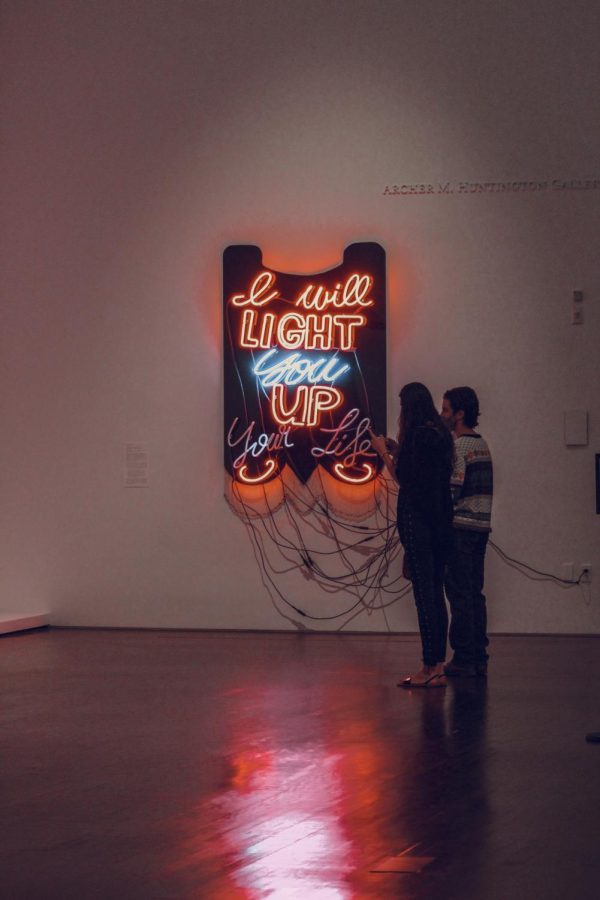
In a different ‘light’
These two patrons who visited the Blanton’s contemporary art gallery on Dec. 12 appear to be looking at their mobile phones rather than up at the art, but perhaps they are looking up information about the work and the artist who created it. Cauleen Smith’s neon banner blinks to reveal alternating messages “I will light you up” and “I will light up your life.” Video footage captures Texas State Trooper Brian Encinia shouting the first statement at Sandra Bland, a Black woman, during a 2015 traffic stop and arrest that led to Bland’s death in police custody. The latter phrase is a lyric from a 1977 Debbie Boone pop song. Smith explained the juxtaposition of the two similar sentences in the following statement. “I wanted to play with this threat, ‘I will light you up,’ by finding a response that neutralized it. . . . And so this flashing neon is a dance off, a sing-a-thon, a battle, a protest, a memento mori that collectivizes Sandra Bland’s resistance, reclaims her sovereignty, and reifies the ways in which Black culture is inextricably woven into national identities and cultures.” Smith, a professor at the University of Texas’s radio, television and film department from 2001 to 2007, said that Bland’s death and the police killings of Botham Jean and Atatiana Jefferson in their Dallas-Fort Worth homes prompted her to create this work.
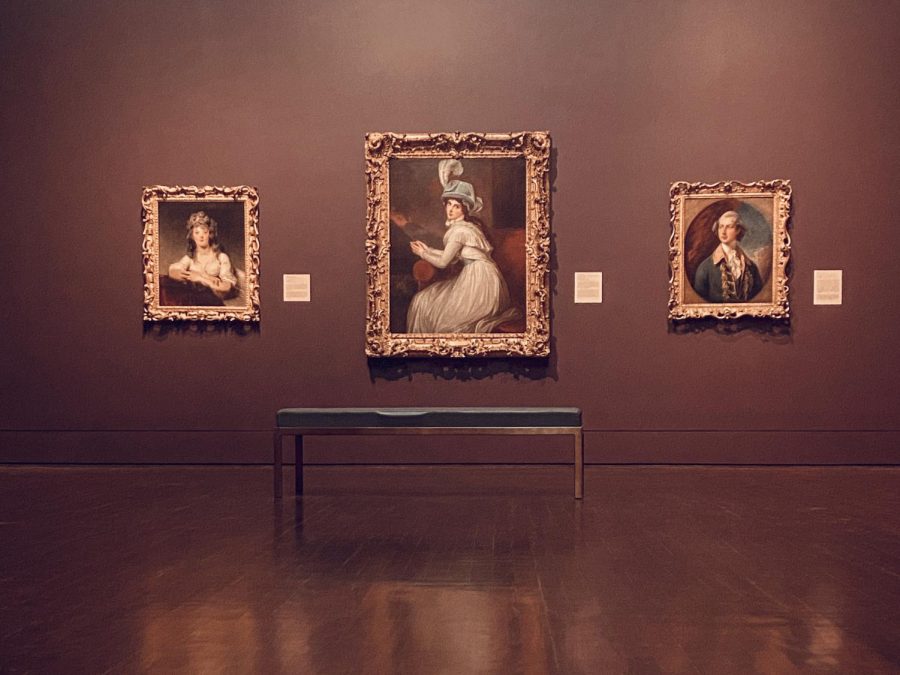
Empty halls
Although there were visitors at the Blanton, there was a very small percentage of the number of patrons who would typically be there on a Saturday afternoon in a non-COVID world. The empty bench is in one of the European exhibit’s few rooms at noon on a Saturday, one hour before the end of the morning session. The lack of visitors is affecting museums all over the world during the pandemic. “As a nonprofit, the Blanton depends heavily on admissions, membership, donations, and other income,” reads a statement on the “Support” page of the Blanton website. “The recent 5-month closure significantly impacted us.”

Masked smiles
As is happening everywhere, people’s expressions are hidden by masks. This takes extra effect in a place like a museum where you’re surrounded by art created to evoke emotion. This photo was taken on a Saturday morning and depicts a museum visitor looking at a sculpture on the ground in the Blanton Art Museum.
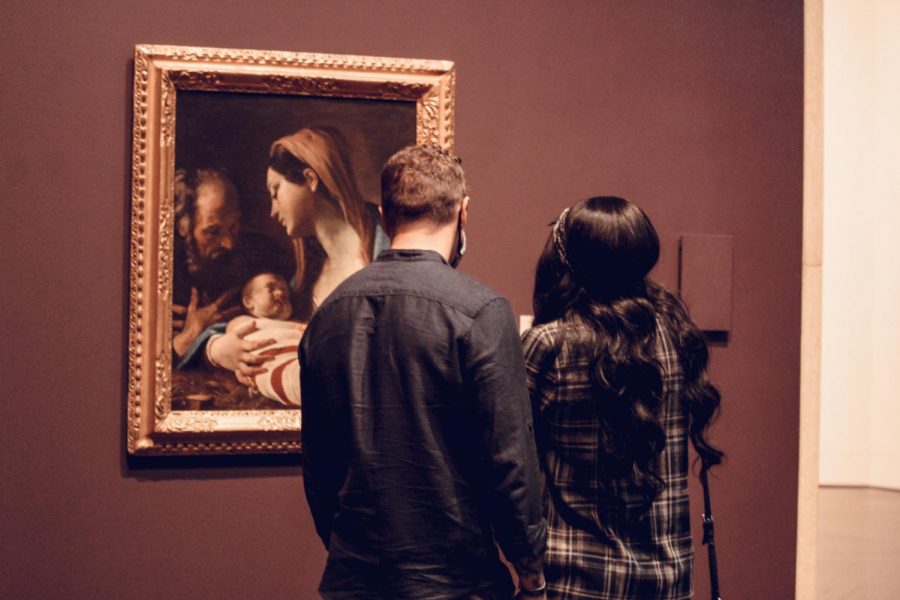
Something steady
With the increasing stress of the pandemic, it’s helpful for people to have something steady in their life. To some, this is a consistent food or book and to others like the couple in this photo, art serves as a constant. In 2017, a study was done at Harvard that proved that creating or even looking at art “can relieve stress and aid communication.” This photo shows a couple at the Blanton art museum looking at classic European art. Although the picture was taken in December 2020, the painting they are looking at dates back to the 17th century.
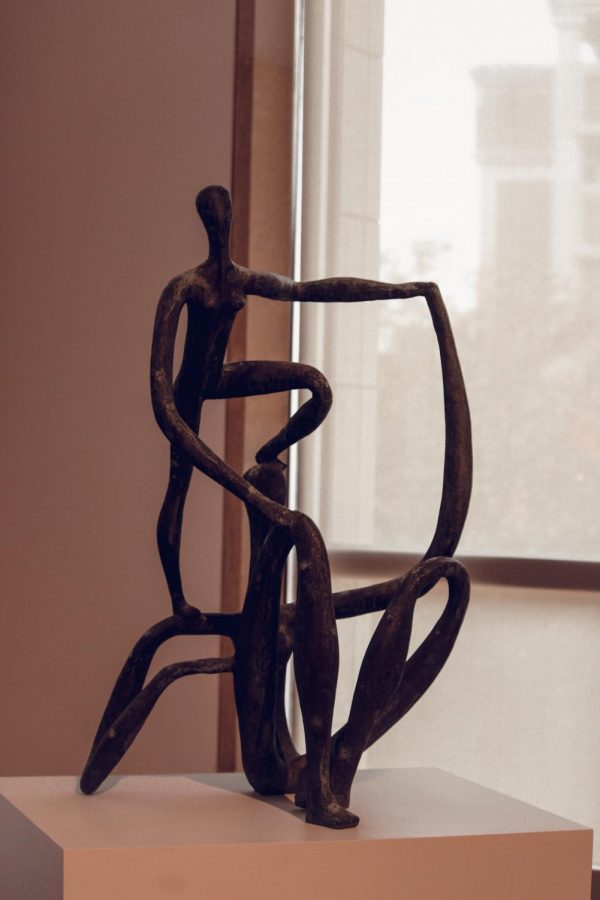
The Blanton Online
This photo of a modern sculpture was taken at the Blanton on Dec. 12. Although anyone can buy tickets online to go to see these pieces in person, the Blanton also offers multiple free online galleries that include both current and past exhibitions. These can be found in the #MuseumFromHome section of their website. This page also included “Curated Conversations” which are live Q&A sessions that you can sign up for online for free. The Blanton website boasts that the online curators will “answer your burning questions about everything from how the windows in Ellsworth Kelly’s Austin got here to what NOT to say to an artist.”



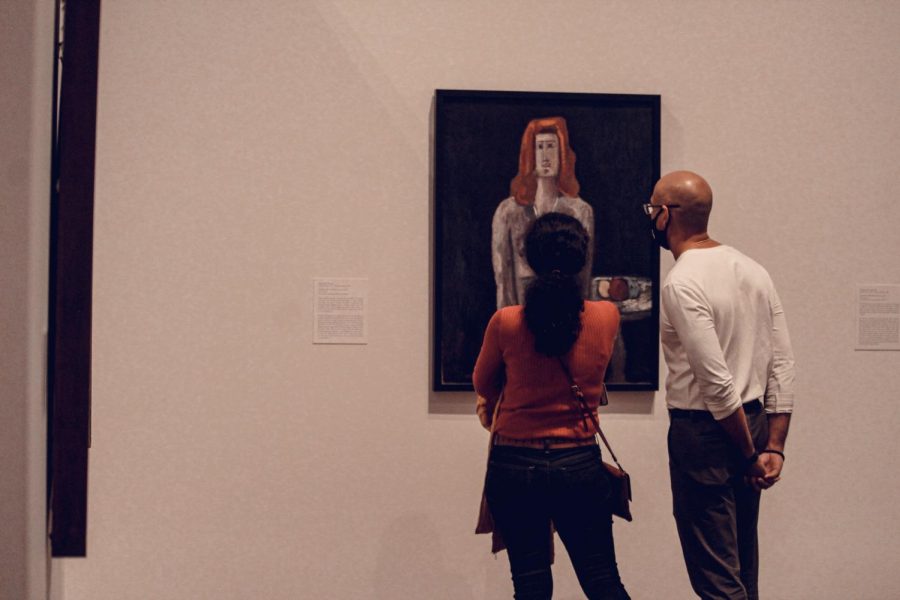

Maggie Coulbourn • Mar 8, 2021 at 8:13 pm
I really like how you wrote this. Especially with the line “Because of the reduced visitor in the museum, the typical quiet hum of conversation has dissipated. This turns every conversation or exchange of words instinctively into a whisper.” I can easily picture visitors speaking in hushed voices to avoid breaking the silence. I also appreciated all of your images of the art, and patrons appreciating the art.